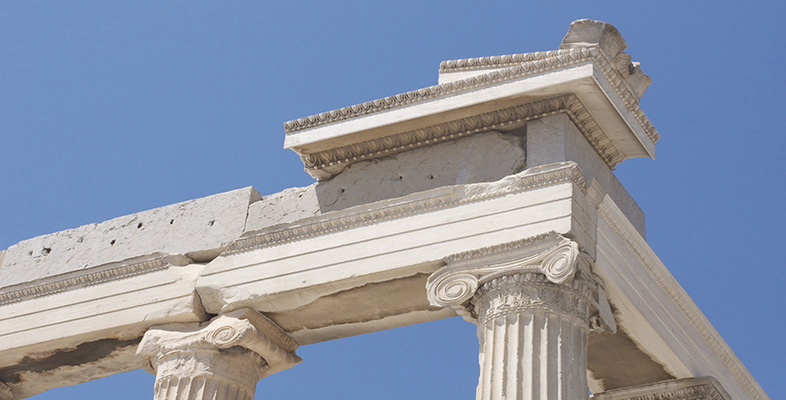1.8 ‘Classical’ languages
We can return now to the term ‘classical’. As you study the classical world, you might like to reflect on the usefulness or otherwise of the term. Here are a few observations, although the list is by no means exhaustive or immune to challenge. The main thing is to treat the word ‘classical’ carefully and critically, and to be aware that it can rule out as much as it rules in.
Here are a few potential weaknesses with the term:
- It can be used both to describe historical periods and to evaluate them (usually favourably). We might compare a term like ‘1960s’, which is sometimes used in the same way, although in this case the evaluation is often unfavourable.
- It has both a narrow and a broad sense. It can be applied narrowly to ‘classical’ periods within Greek and Roman history (fifth- and fourth-century-BCE Athens, and Rome of the first centuries BCE and CE), and, more loosely, to the Ancient Greek and Roman worlds as a whole.
- Some fundamental works of Greek and Latin fall outside the narrow definition, including Homer’s Iliad and Odyssey (eighth century BCE) and St. Jerome’s Latin translation of the Bible, the so-called Vulgate, from the fourth century CE.
- It views the classical world through its art, above all its great literature. It may therefore divert attention from other traces of the ancient world such as coins, inscriptions, papyri, and, above all, the physical remains studied by archaeology.
- It emphasises the extraordinary over the ordinary. One could argue that ‘ordinary’ writing tells us as much about a society as ‘extraordinary’ literature. We must at least acknowledge that both emerge from the same society.
- Tastes change and the idea of what is ‘classical’ can change with them. The first-century-CE Roman poet Statius, for instance, is today known only to specialists, but his epic poem on the legend of Thebes (Thebaid) was profoundly influential in the medieval period, and he was read by both Dante and Chaucer (who refers to him as ‘Stace’).
At the same time, it is important to acknowledge that the term has a number of strengths:
- It expresses the influence of both languages on European culture.
- It is a historically important concept, central to the survival of interest in Greece and Rome, even if its influence is weaker today than in the past.
- It highlights one central reason for studying classics – direct access to important works of literature.
- The Greeks and Roman themselves thought in terms of ‘classical’ periods, i.e. periods where literature and art were believed to be authoritative and worth emulating. ‘Classical’ is itself a Latin term, from the Latin word ‘classicus’ meaning of the highest class.
- It captures the close relationship between Greek and Roman culture. It is useful to have a single word to make this point. ‘Greco-Roman’ is a more neutral term for expressing the same idea.
